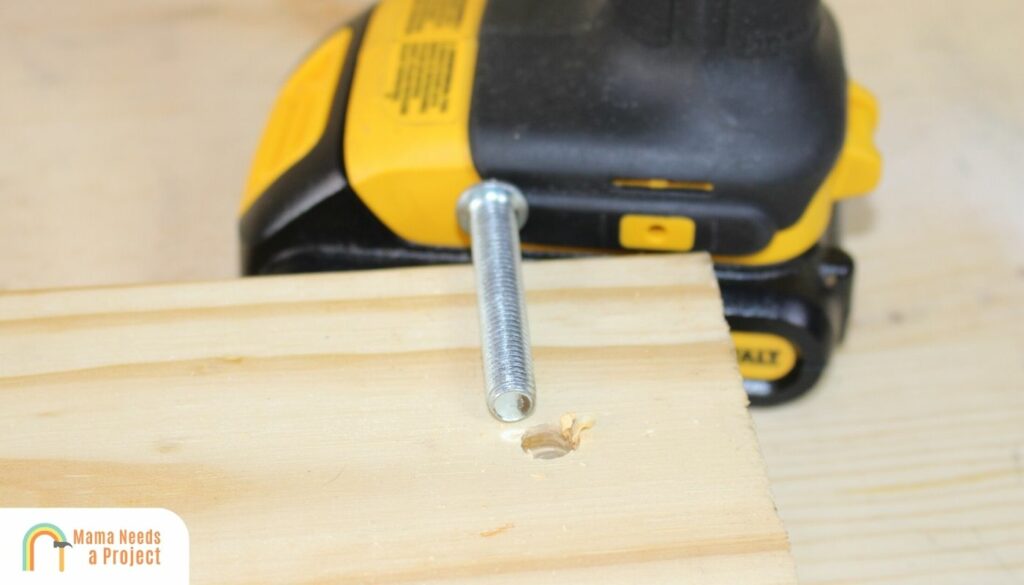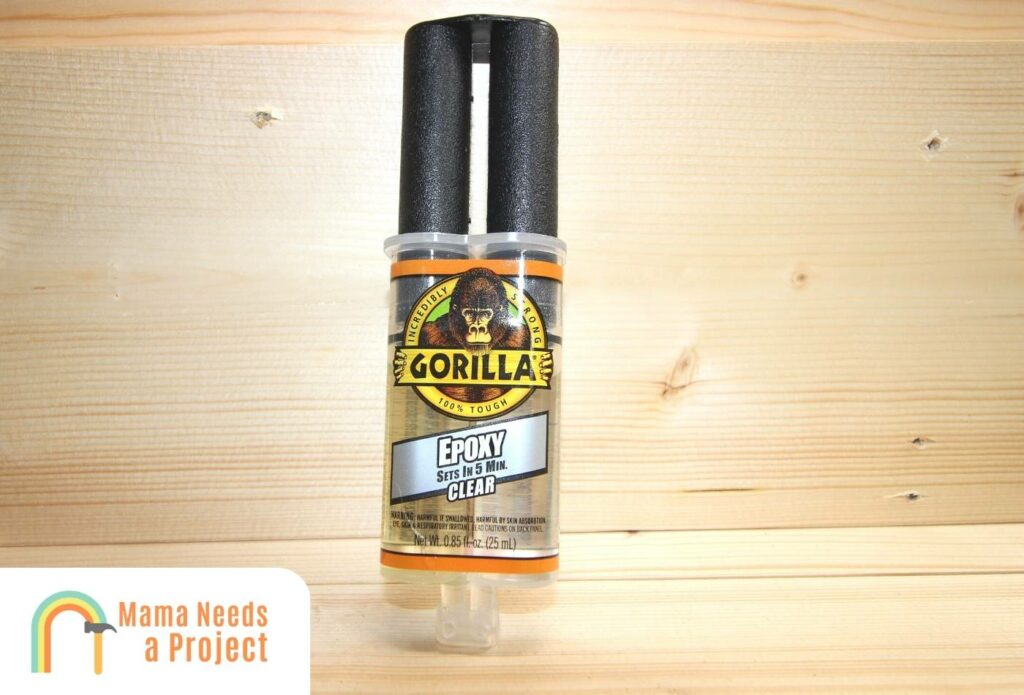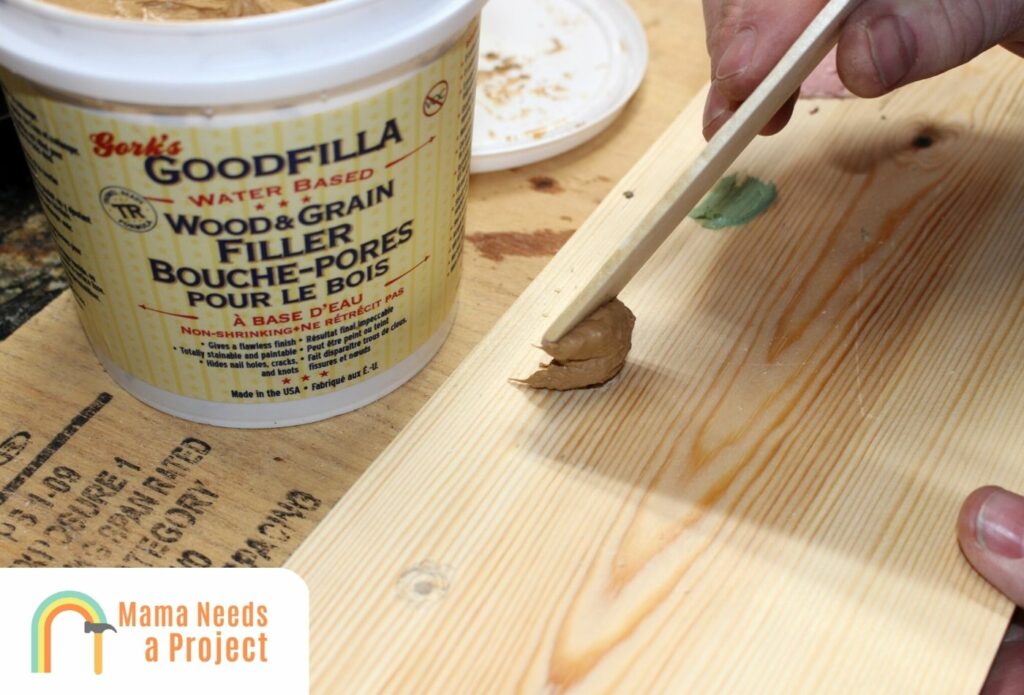How to Fix a Screw Hole That Is Too Big (17 Methods!)
We’ve all been there a time or two.
You want to drill a screw into a hole, but the hole is too big and doesn’t grip any part of the screw. As a result, the screw sits in the hole but doesn’t actually do any good and is essentially worthless.
In this guide, I’ll show you exactly how to fix a screw hole that is too big. Let’s dig in!
1. Use an Oversized Screw

The first and most obvious way to fix a screw hole that is too big is to use a slightly thicker screw. Wood screws come in all shapes, lengths, and sizes, and if you have a decently well-stocked toolkit or are close to a hardware store, using a larger screw is a viable option.
If you don’t have larger wood screws, you can also use try using a lag screw or carriage bolt, as these options are typically thicker than wood screws. Unfortunately, if you need to use a specific screw for your project, using a larger one isn’t an option, and you’ll have to move on to one of the methods below.
2. Use a Wooden Plug
Your second option is to use a wooden plug to partially fill the hole and make it more accommodating for a screw. It’s common to use a wood plug to cover up screw heads after they have already been drilled home. However, you can use the same wood plugs to partially fill the existing hole, thereby making it large enough for your screw to grip the sides.
For best results, you should add a little dab of wood glue or filler to the hole before inserting the wood plug. With the glue or filler in place, push the plug into the hole completely so that most of it is filled. You should now be able to re-insert the screw, and it will hold fast to the plug and surrounding wood surface.
3. Try a Wooden Dowel
If you don’t have any wooden plugs handy, you can try the same tactic with a wooden dowel. Wooden dowels are like small pegs or pins that often accompany IKEA furniture and other self-assembly items. However, you can also purchase them at your local hardware or home improvement store.
To fix screw holes that are too big with wooden dowels, insert the dowel into the hole as far as it will go. If part of it is sticking out, cut it off using a knife or wood plug cutter. Either one will work, but cutter tools are specially made for these situations.
With the dowel flush with the wall, you can insert your new screw, and it should hold as good as new.
4. Use Glue and Sawdust
One of the more creative and innovative ways to fill screw holes is to combine wood glue with sawdust that matches the color of the wall or ceiling. Granted, this method will only work if you have sawdust handy, but you should if you recently backed the screw out of the wall, leading to its enlargement.
If you use this method, it’s important to give the glue and sawdust time to harden together. As such, it’s a slower way of filling an oversized screw hole than using a solid substance, such as a dowel or plug. However, if you’re in a pinch and don’t have other materials at your disposal, you can use glue and sawdust.
5. A Pencil or Pencil Shavings
If you don’t have sawdust handy, but you do have a wood pencil, you can optionally use it or its shavings in place of sawdust. To do this, simply sharpen the pencil and collect the loose shavings.
Bind them into a ball, combine them with glue or putty, and jam them into the screw hole. If the oversized screw hole is too big for shavings, you can also use the pencil itself the same way you would a dowel or plug.
6. Try the Toothpick Method
Unless you do a lot of woodworking or carpentry work, there’s a fair chance you won’t have wooden dowels, plugs, or even glue lying around the house. However, toothpicks are something that nearly every renter or homeowner has, and you can use them to fix a screw hole that’s too big.
Here’s how to use the toothpick method.
- Start by breaking off toothpicks so that they are the same length as the depth of the hole.
- You may need to use two, three, four, or more toothpicks to fill the hole adequately.
- If you use enough toothpicks and can fill the hole completely so that it’s a tight fit, you don’t need to add glue.
- However, if you can only get the toothpicks snugly into the hole, you should add some type of household glue or putty to ensure a tight fit.
- After giving the glue or filler adequate time to harden, you can go ahead and insert the screw back into the hole.
7. Use the Non-Burn End of Matches
If you don’t have toothpicks handy, you can follow the same steps as above but with matches. However, make sure only to use the non-burning end of the matches, just to be on the safe side.
8. Switch to a Drywall Anchor
Similar to using a larger screw to fill the hole, you can also switch tactics and use a drywall anchor. There are several different types of drywall anchors at your disposal, and you can use them depending on the size of the hole in question.
Start with a basic anchor that you press or gently hammer into the hole. If the hole is too big for even the anchor, you can upgrade to a screw-in drywall anchor. As the name implies, you will need a drill or screwdriver to slowly insert the anchor until it’s flush with the wall.
You can then use one of the screws that accompanied the anchor for fastening purposes. Bear in mind that certain types of anchors work with materials aside from drywall, but they may not create a tight fit.
9. Fill With Rawl Plugs
If you’re working with a wall or ceiling aside from drywall and can’t use a drywall anchor, you can opt for a Rawl plug. Rawl plugs are very similar to drywall anchors in that you insert them into holes to fill them and give something for a screw to bind to.
The main difference between Rawl plugs and drywall anchors is in their construction. Rawl plugs can be either solid or rubbery, and they have a slightly cylindrical shape so that they’re bigger at the end than at the front.
As you slide the Rawl plug into the hole, the swollen end will compress tightly inside the hole and give your screw something solid to attach to. While these are a great option, most people have never heard of Rawl plugs, let alone have them lying around the house, and may need to try other methods.
9. Use an Epoxy Filler

Items like putty and glue are great options, but they typically need to be combined with something solid to achieve the desired effect. If you don’t have any of these materials lying around, you can opt to use an epoxy filler.
Epoxy is a liquid that hardens over time as it dries. It also slightly expands, which makes it a great way to fill a screw hole that’s too big.
All you need to do is use a brush, finger, or something else to insert epoxy into the screw hole and give it time to harden. After it’s hardened, you can drive your screw into the hole, and it will hold tight.
10. Nylon Cable Ties Are Worth a Try
In the same way that you can use a wooden dowel or plug, you can also use nylon cable ties. In fact, because of how grippy cable ties are and because they come in a wide range of sizes, they are sometimes better than other ways to fix a screw hole.
To use nylon cable ties, start by selecting a tie that’s relatively the thickness of the hole. If you only have one size, you can stick several ties together and jam them into the hole. Next, you can either tighten the ties or leave them open, as long as they’re filling the hole.
If necessary, add a bit of glue, putty, or filler to the ties to “tie” up and fill and loose ends. Next, insert the screw, and it should bind tightly to the nylon ties in the hole.
11. Golf Tee Method
If you’re like countless other woodworkers and carpenters, there’s a chance you keep your golf clubs in your work truck, just in case the opportunity presents itself on a sunny day. If so, you can use a golf tee to plug a screw hole that’s too big.
Wood golf tees have a cylindrical shape where they start small and get progressively thicker until you reach the head of the tee. Insert the tee until it fills the screw hole, then cut it off so that it’s flush with the wall. To be safe, it’s best to add a bit of wood glue to the inside of the tee so that it hardens against the wall.
When the glue is dry, you can insert the screw and move on with life.
12. Patch the Hole and Drill a New One
Even though this idea is listed far down on the list, it’s one of the first options you can use to patch a screw hole that’s too big. To patch a hole, you will need a putty or filler that closely resembles the wall into which you’re pressing it.
Once the putty or filler has hardened, you can use a small amount of paint to coat the hole so that it resembles the rest of the wall. When the hole is patched, you can go ahead and drill a new pilot hole for your screw.
13. Fill With Steel Wool
Depending on how big the screw hole is, you can also use steel wool to make it tighter. Steel wool is very coarse and is a unique mixture of hard and malleable, and is typically used to cover holes in foundations and exterior walls to keep pests out.
Steel wool is available at most hardware, convenience, and home improvement stores if you don’t have any with you. Once you’ve acquired it, tear a bit of steel wool off and jam as much of it into the hole as you can.
Use a pencil, screwdriver, or drill bit to really press the wool into the hole. Because steel wool doesn’t have any actual binding qualities, it’s best to use a little bit of glue or filler with the wool. Once it has hardened, drill the screw back into the hole, but be aware that it won’t be able to hold a ton of weight.
14. Plug With Wood Filler

While wood glue is always preferable over fillers and putties, you can’t use it if you don’t have it on you. Therefore, if you find yourself without wood glue, you can use a wood filler or wood putty in its place.
Wood fillers are the preferred option because they get harder and firmer than putties, and you can easily use them with plugs, dowels, toothpicks, and any of the other materials on this list that typically require glue.
The nice thing about wood filler is that you can use it on its own or with other plugging materials. Used by itself, filler will harden and become firm, and you can drill screws directly into it.
If you have a screw hole that’s on the larger side, you can combine filler with a wood plug, dowel, or another filler.
15. Toilet Paper and Wood Glue
While the toilet paper method shouldn’t be your first option, it’s an excellent fallback plan if all else fails. Here’s how to use the ingenious and innovative toilet paper method to fill a large screw hole.
- Gather some toilet paper and shred it into fine pieces.
- If you have tissues or paper towels, you can also try these options, but toilet paper works the best.
- Next, pour some wood glue into a disposable cup or bottle cap.
- Combine the shredded toilet paper or tissues with the glue and mix the concoction together.
- As you mix it, the toilet paper and wood glue should start to form a semi-solid, clay-like mixture.
- Use a finger or putty knife to apply some of the mixture to the hole and fill it completely.
- Give the concoction time to dry, then insert the screw into the hole, and you should be good to go.
16. Fill With Wood Putty
As we said before, if you don’t have wood glue, filler, or epoxy, you can also use wood putty. The downside of putty is that it doesn’t get as hard or firm as these other materials, which means it won’t be able to support a lot of weight.
If you need your screw to hold a bit of weight, you should combine wood putty with dowels, plugs, toothpicks, and other materials in this article. The end result still won’t be quite as good as with wood glue or filler, but it should get the job done.
17. Try a Pinewood Shim
Although not quite as ingenious as the toilet paper method, using a pinewood shim is another great way to fix an enlarged screw hole. Pinewood shims, and other types of shims for that matter, are typically used by flooring professionals and door or window installers.
However, you can usually find some lying around at a construction site or purchase them at your local hardware store. Here’s how to use a shim to fill a screw hole.
- Cut or trim the shim into a pointy shape where the front end is larger than the back end.
- Cut the shim so that its length matches the depth of the hole.
- Apply a small amount of wood glue around the perimeter of the shim.
- Insert the shim into the hole and push it in until it’s flush with the wall.
- If necessary, you can use a plug cutter or knife to cut the shim so that it’s flush with the wall.
- Once the glue has had time to harden, the shim should be solid enough to screw into.
Which Method is Right For Me?
With 18 different ways to make a screw hole tighter and smaller, it can be tough to know which option is right. In general, if you can patch the hole and drill a new one, this is the preferred method. If that isn’t an option, your best bet is to use a larger screw, drywall anchor, or Rawl plug.
However, when these aren’t options, it’s best to use wood glue combined with fillers, plugs, or dowels to make your fix. If those aren’t options, you can proceed down the list until you find something that works.
FAQs
How do you make a screw hole tighter?
The best way to make a screw hole tighter is to insert a drywall anchor or Rawl plug into the hole to fill it. If those aren’t options, you should use wood glue combined with a wooden dowel or plug to tighten a screw hole.
What to do when a screw hole is too big in drywall?
If possible, the best thing to do when a screw hole is too big in drywall is to patch the hole and drill a new one. If that isn’t an option, you should turn to drywall anchors to fill the hole and provide support.
Are you searching for a way to fix the hole like new? Check out the video below!
Final Thoughts
As you can see, there are more than a dozen ways to fill a screw hole that is too big.
While some of these methods will certainly work better than others, they can all help you out in a pinch. By using the materials you have at your disposal and keeping in mind that different methods can support different weights, you can easily fix a screw hole that’s too big.


